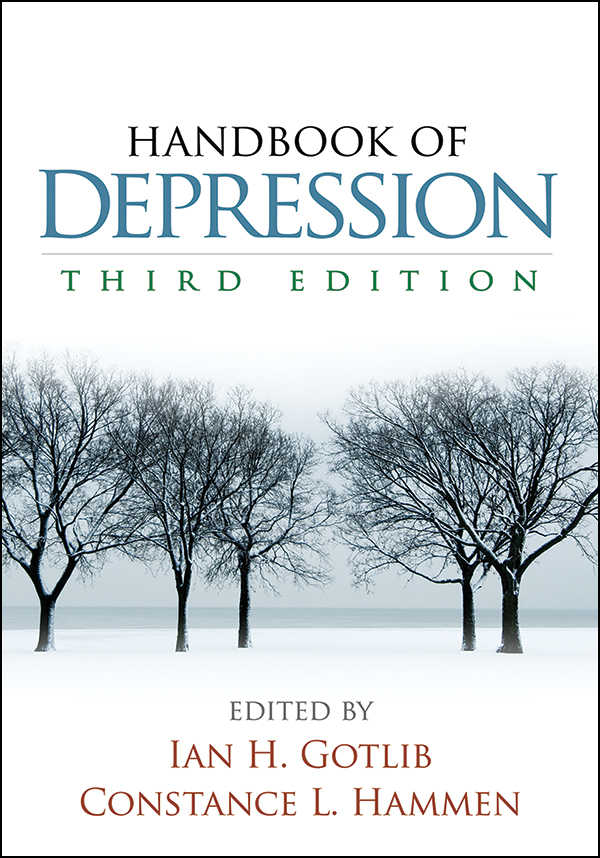Most recent edition of the Handbook of Depression
Even a superficial look at the successive editions of the Handbook of Depression (Beckham and Leber 1985, 1995) demonstrates that, like most psychological and psychiatric entities, depression is not a single thing and that no single approach may be considered simultaneously necessary and sufficient for understanding and treating the condition.3 In the Handbook’s most recent edition, thirty chapters address four main areas (Gotlib and Hammen 2014).
Part 1 reviews “descriptive aspects” such as the epidemiology, course, outcome, and assessment of depression as well as issues in methodology, classification, and diagnosis (for example, the relations between personality and mood disorders or the comparison of unipolar and bipolar depression).
Part 2 moves from the genetics of major depression to the interpersonal and social environment of the condition, dealing along the way with the contributions of neurobiology and affective neuroscience as well as with depression and early adverse experience, children of depressed parents, and the cognitive aspects of depression.
Part 3 examines depression in specific populations (with a chapter on understanding the condition across cultures), and Part 4 considers prevention and treatment, not only pharmacological but also cognitive, behavioral, and psychosocial.

Description of the book
An authoritative reference on depression and mood disorders, this volume brings together the field's preeminent researchers. All aspects of unipolar and bipolar depression are addressed, from genetics, neurobiology, and social-contextual risk factors to the most effective approaches to assessment and clinical management. Contributors review what is known about depression in specific populations, exploring developmental issues across the lifespan as well as gender and cultural variables. Effective psychosocial and biological treatments are described in detail. Each chapter offers a definitive statement of current theories, methods, and findings, and identifies key questions that remain to be answered.

Dr. Ian H. Gotlib's profile at Stanford Mood and Anxiety Disorders Laboratory

Constance L. Hammen's profile at Guilford Press










































































0 comments
Sign in or create a free account